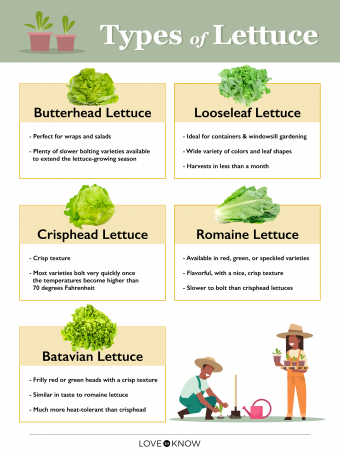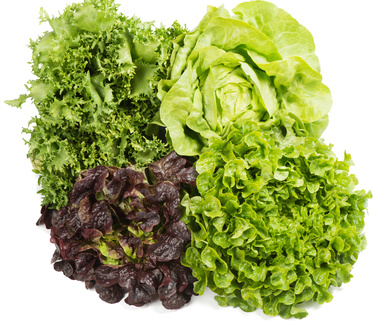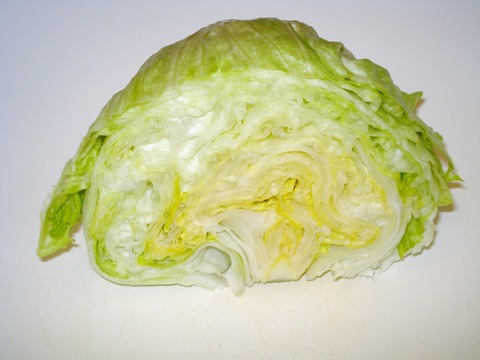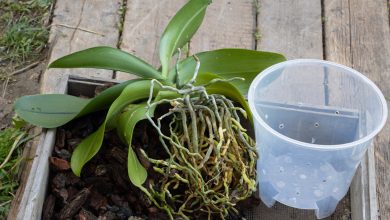How to grow Lettuce in the Garden: Types and varieties of lettuce

Good morning everyone! How are you doing? I hope you have had some pleasant days and that you continue to enjoy the orchard. As you know, on September 23 here in Spain, we begin autumn. This affects us in our way of working and we have to prepare the garden for the cultivation of new species that endure in winter, as you saw in the article that we uploaded a few weeks ago THE GARDEN DURING THE YEAR (I).

Something that may be interesting for us to deal with is the management and cultivation of species that we can plant in the fall, for this reason, today we want to talk about how to grow lettuce in the garden. Go for the lettuce!
Characteristics of lettuce
This question seems like a joke and I know that many of you may have missed telling me «more or less round and green» but well, let’s try to go a little further. The origin of lettuce is not very well defined as it can happen in the case of other species, since lettuce as we know it is Lactuca sativa, but there is a predecessor with enough history as Lactuca predecessor, hence it is not clear the botanists of its origin.
What is known is that the Greeks and Romans cultivated this plant and that they consumed it in their plants. There is also reference to the fact that the leaves of loose lettuce began to be consumed and that later, in the 16th century, Europe opted for the production of head lettuce.
Types and varieties of lettuce
Lettuce is a plant that belongs to the Asteraceae family, which for those of you who know something about taxonomy is the same family as Compositeae (compositae) and as I have told you in the previous paragraph, the scientific name is Lactuca sativa. We find a plant that has the following characteristics:
- ROOT: it does not usually exceed 25 cm, it is pivoting, short and with ramifications
- LEAVES: They are placed in rosettes and then they can stay that way (example, romaine lettuce) or they can be hearted (example, iceberg lettuce)
- STEM: cylindrical and branched
- INFLORESCENCE: they are yellow flower heads
- SEEDS: have a feathery pappus
To give you an idea of the varieties and types of leaves I leave you the following table where you can see this a little more clearly:
– Romaine lettuce: Lactuca sativa var. longifolia
They do not form a true bud
- Roman
- Baby
– Heart Lettuce: Lactuca sativa var. capitata
These lettuces form a tight head of leaves.
- Batavian
- Mantecosa or Trocadero
- Iceberg

– Loose leaf lettuces: Lactuca sativa var. inybacea
They are lettuces that have loose and scattered leaves.
- lollo rossa
- Red Salad Bowl
- Cracarelle
– Asparagus lettuce: Lactuca sativa var. augustana
They are those that are used for their stems, having pointed and lanceolate leaves.
How to grow lettuce
Something you may think is, “why do you say that lettuce is winter if I plant it in April?” Well, let me tell you, lettuce is called a winter plant because it is a plant that prefers humid and cool climates.
This year 2014, just like 2013, a very harsh winter is not expected and it may once again be a good time to plant our lettuce. If, due to your geographical area or because you feel like it, you prefer to plant it in April, place it in a cool place where there is shade, otherwise the lettuce will glean too much.

As for the soil, it prefers soils that are rich in nutrients and that drain very well. If we have very clayey soils, as was the case in some areas of the Alcobendas orchards, you should put compost and manure; and if your soil is not very clayey, you can add humus to increase the amount of nutrients.
planting of lettuce
Sowing lettuce can be direct (I sow it directly in autumn to harvest it in winter) but you can also sow it in a seedbed and then sow it in the ground. The separation between plants can be about 25 cm and between lines of 30 cm. If you want to know the estimated time, more or less, for lettuce after planting it, you can harvest it in about 8 weeks (two months more or less) although it also depends on the taste you have, and unlike tomatoes, when you pick it, consume it, not store it in a refrigerator for a long time
lettuce irrigation
If we talk about irrigation, as you are more or less guessing, lettuce is a plant that likes moist soils, so to grow lettuce you have to try not to dry out your soil. Drip irrigation is optimal for this plant and if you plant your seedbed in the garden, a watering can is enough.
As an anecdote, tell you that in the south of Spain in intensive crops, they use exuding hose to maintain high humidity. Despite all this, humidity does not mean that you have lettuce in a bathtub, it can rot, as we always tell you, you must be responsible with the water.
Well, I hope these tips have been useful to you and see you at Agrohuerto.com in future articles.
A hug and up the hoe



![Photo of Prune Citrus: [Importance, Season, Tools, Considerations and Steps]](https://www.complete-gardening.com/wp-content/uploads/2022/08/prune-citrus-importance-season-tools-considerations-and-steps-390x220.jpg)
![Photo of Prune the Lady of the Night: [Importance, Time, Tools, Considerations and Steps]](https://www.complete-gardening.com/wp-content/uploads/2021/06/Podar-Dama-de-Noche-390x220.jpg)